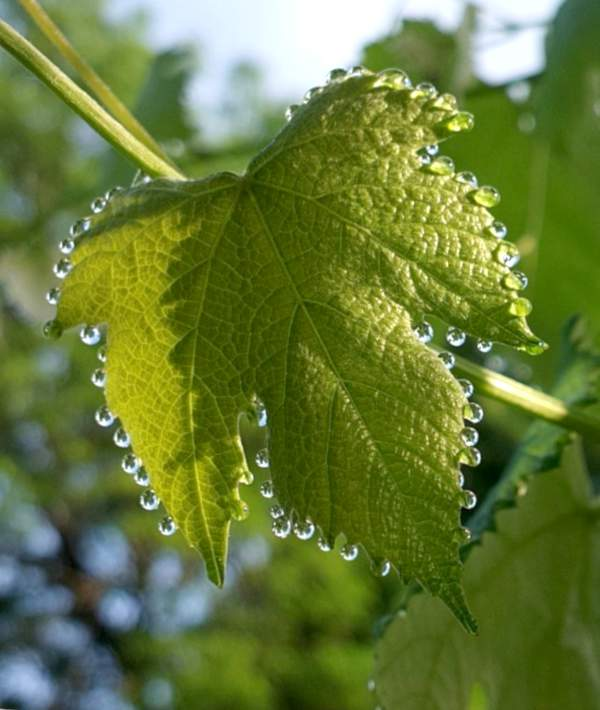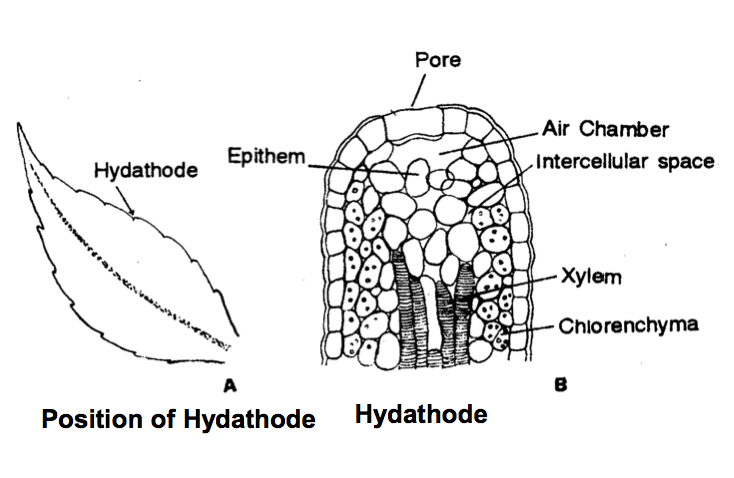Guttation is a physiological property of plants by which they get rid of excess water and thus, maintain a normal root pressure in the roots. Water is essential for the proper physiological and developmental growth of plants. It also acts as a limiting factor in plant growth.
Water helps maintain the turgor pressure in plant parts, but when the amount of water in the plant body is less or more than the normal amount, it can endanger the normal living state of the plant. Hence, this property of plants acts like a safety mechanism to maintain a proper balance between the nutrient and water content in the plant body.
This article will help you understand the main concepts of guttation and the factors responsible for it.

Index
What is Guttation
It is a process in which water is secreted from the tips of the leaves of plants. Water from soil passes through the guttation process. It picks up minerals, enzymes, and other chemicals (xylem sap) e.g. wheat, grass, barley, tomato, etc.
Guttation takes place through hydathodes. Hydathodes are a special kind of tissue in the leaves which are made of a group of living thin-walled parenchymatous cells with numerous intercellular spaces.
Related Topic: Mineral Transportation in Plants and Its Means
How Does Guttation Take Place
Guttation is caused by the creation of root pressure. When the level of moisture in the soil is high, water enters the roots. This is facilitated due to the low water potential of roots when compared to that in the soil, and the entry of water into the roots creates root pressure.
The root pressure forces the oozing out of the water in the form of drops through hydathodes, which are structures present on the edges of the leaves.
What is Hydathode

A hydathode is also known as water stomata because of their resemblance to stomatal pores. These pores can be seen in angiosperms – especially in grasses, and they help in the secretion of water droplets by the process of guttation. These are a kind of secretory tissue, made up largely of a group of thin-walled tissues of parenchyma and have large intercellular spaces, and are known as Epithem cells.
The Epithem cells are found on leaves but they lack chloroplasts and are hence non-green in colour. They meet the xylem tracheids from the vascular bundle. These highly specialized structures can be located on the margins of the leaves.
Additionally, the epithem cells open out into one or more sub-epidermal chambers which in turn communicate with the exterior environment with the help of water stoma. The water stoma structurally resembles an ordinary stoma, but is usually larger and has lost the power of movement.
Function of Hydathodes
The hydathodes perform two major functions:
- The major function of this specialized tissue is to exude water and other materials along with it through this process.
- They have also been found to play an indirect role in the mechanism of the ascent of sap.
Chemical Contents of Exudate
The released water droplets due to the guttation are called the exudate and the process of this oozing out of the water content is what we know as exudation. It is important to note that, the water released through these hydathodes is not pure- it has a mixture of minerals including organic and inorganic compounds.
The exudate mainly has a large number of sugars and potassium. This has been confirmed by examining the white crust that remains on the leaf surface once the drops have dried.
Guttation and Transpiration
Transpiration has no role in guttation. In fact, when the relative humidity is fairly high during the night, the transpirational pull is suppressed and root pressure generation causes guttation.
Key Differences Between Guttation and Transpiration
It is important to understand the difference between both these processes as they both are responsible for the loss of water from plant bodies, but differ significantly. The main differences are:
| Guttation | Transpiration |
| Takes place during the night. | Takes place during the day. |
| Water is lost in the form of liquid droplets. | Water is lost in the form of water vapours. |
| Facilitated by hydathodes. | Facilitated by stomata. |
| Lost water is rich in mineral salts. | Transpired water is pure. |
| It is an uncontrolled process. | It is a regulated and controlled process. |
FAQs
Guttation is not to be confused with dew, as dew is water droplets that condense from the atmosphere onto the plant surface whereas, guttation is the process by which plants exude water and minerals through hydathodes on the leaf edges.
Guttation is a physiological property of plants by which they get rid of excess water and thus, maintain a normal root pressure in the roots.
High root pressure and low transpiration rate are the main factors responsible for guttation in plants.
Guttation benefits plants. It is a way of helping the plant evacuate excess water around roots. Hence, it’s a coping mechanism that the plant uses to protect roots from rotting.
